Before every game, strikers see pictures of what they want to happen in the game.
Some imagine using their strength to hold up the ball and dominating the opposition’s centre-backs in the air.
Others visualise getting countless opportunities to use their speed and skill to torture defenders.
However, all strikers dream of those golden chances when they’re running through on goal and have only the goalkeeper to beat.
This type of chance is viewed as being one of the easiest in football to convert.
Coaches, pundits and fans are furious when players fail to convert a 1v1 chance.
Although these chances can be far more complicated than they look.
A ‘keeper can charge out to close the angle, giving the centre forward little to aim at.
The pressure of knowing that this is an excellent opportunity for your side can also weigh heavy on the centre forward, leading them to poorly execute their chosen method of beating the goalkeeper.
Ultimately, the striker initially failed to decide on the best technique to score, leading them to wish they had attempted another kind of finish.
The best strikers in the world have an arsenal of techniques that they can call upon when they face the goalkeeper.
In this analysis of finishing 1v1 opportunities against the goalkeeper, we’ll examine three techniques for beating the goalkeeper.
We will use one of football’s great forwards as a model for each finish.
When is the best time to use these techniques, and what variations should all strikers have?
It’s All About Position
Two things always need to be considered before choosing the technique that will give the best chance of conversion in one-on-one situations.
The first is a consideration of where you are taking the shot from.
Former Manchester United first-team coach René Meulensteen used a model to help the players he coached understand where they should finish.
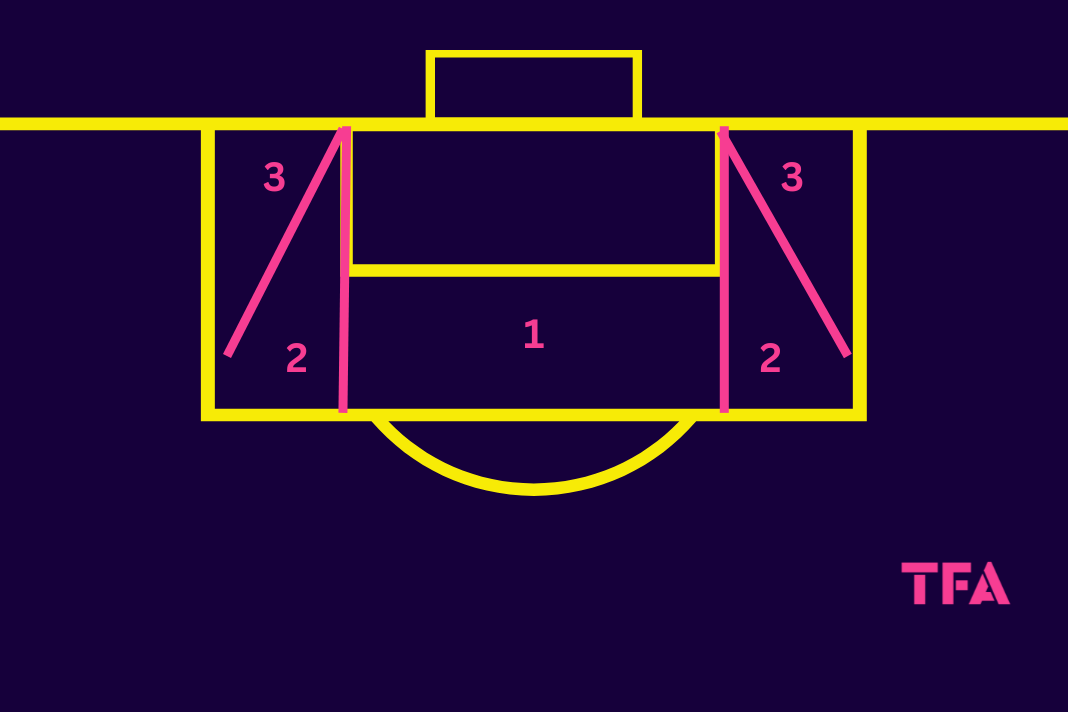
As seen from above, he split the penalty box into five zones.
Each zone has a variety of actions that give the player the best chance of scoring.
Zone 1 is right in the middle of the goal.
This is the prime position to score, and statistics show that the majority of goals are scored in this position.
Zone two is when a player is slightly wider than the goal yet still has a fantastic opportunity to convert.
When a player finds himself in zone three, he must focus on being a provider rather than scoring.
The position the striker is in decides the next important decision.
Where the goalkeeper is, Meulensteen says that when a player is in each zone, they must never forget that the goal doesn’t move, but the goalkeeper does.
When in zone 1, a forward has the most straightforward task.
The goalkeeper is positioned centrally, meaning the forward can go either left or right.
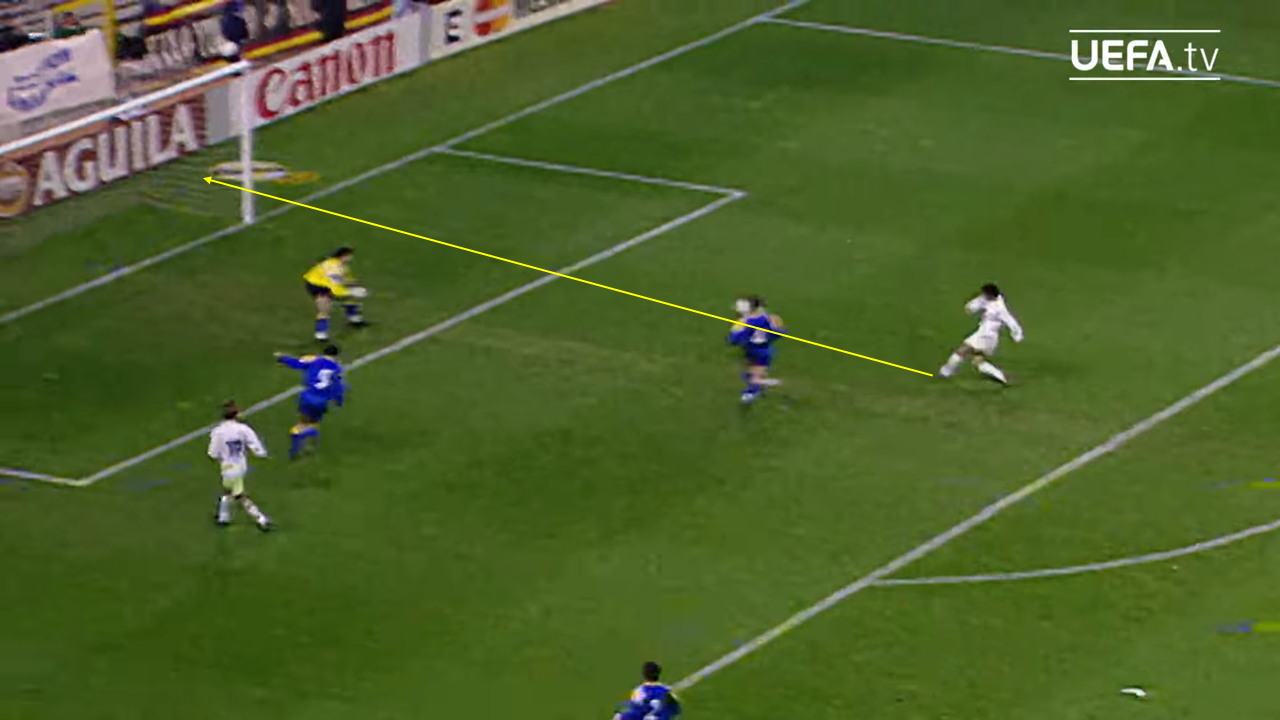
Here, Raúl is in the middle of the box; he has both sides of the goal at his mercy.
He slots the ball into the bottom corner, easily beating the goalkeeper.
When in zone two, the goalkeeper changes their angle, often protecting the front post.
This means that the ideal type of finish in this scenario is aiming for the far corner.
However, with the goalkeeper often looking for an advantage, he may creep slightly toward the far post, trying to predict the goalkeeper’s next move.
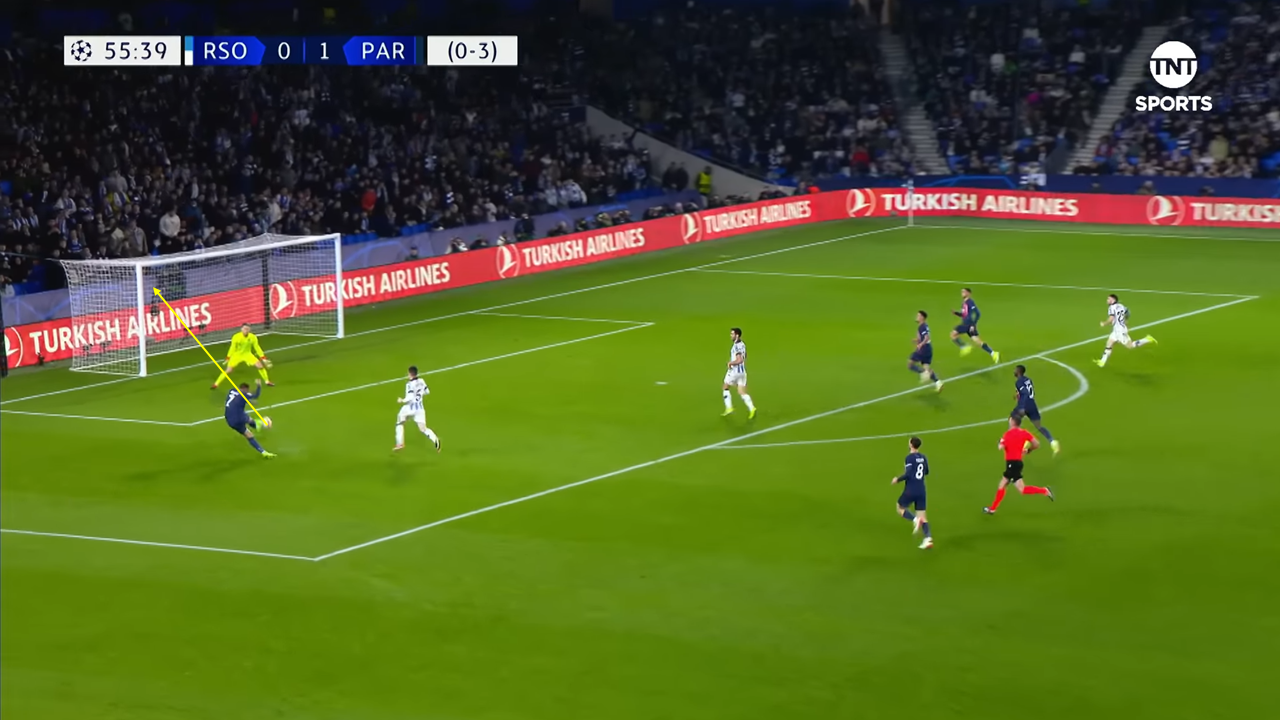
In this example, we see Kylian Mbappe running through on goal.
He opens his body as if to bend the ball into the far corner.
However, he drills the ball into the bottom corner of the near post, knowing that the opposition ‘keeper has tried to gain an advantage by moving towards the far post.
Yet, what’s the secret to consistently scoring in the second zone?
The Far Post Finish – Thierry Henry
One of the most iconic images of the Premier League era was that of Thierry Henry, breaking in behind the opposition’s defence from the left-hand side and slotting the ball beautifully past the goalkeeper with his right foot into the far corner.
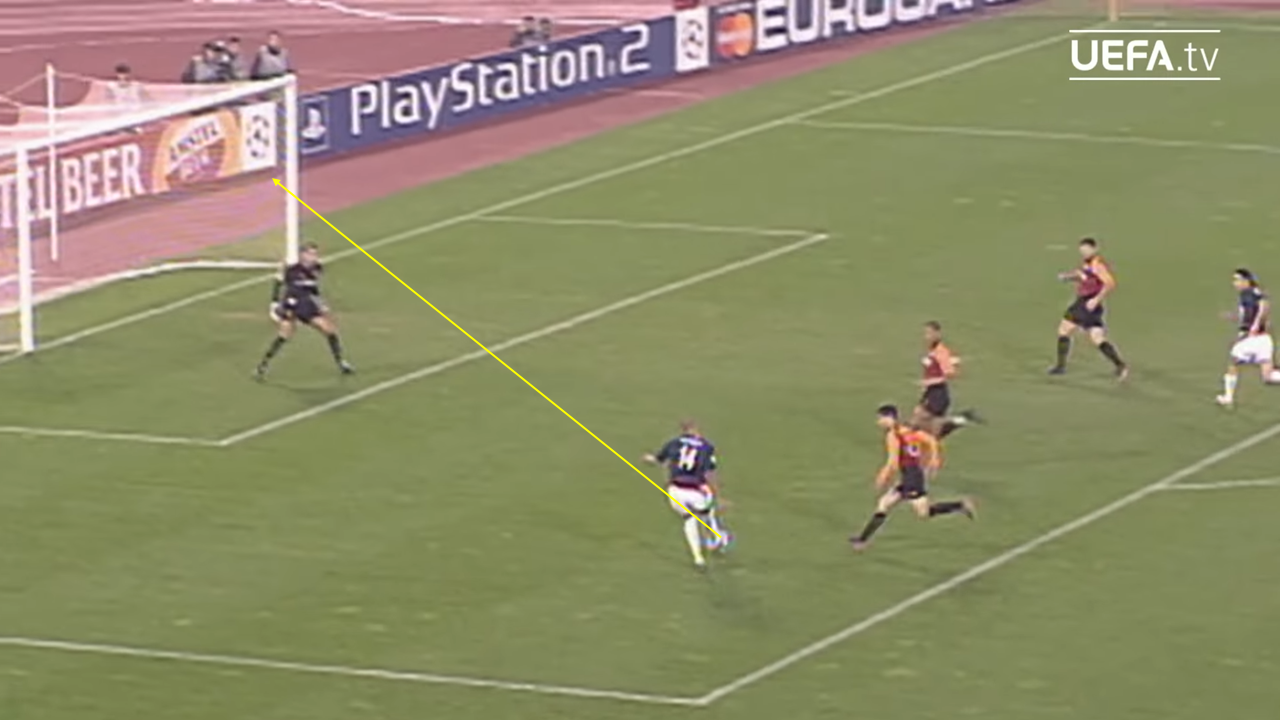
Here, in a Champions League tie against AS Roma, Thierry Henry shows a prime example of this type of goal.
He has removed the positive touch from his feet and opened up his body, allowing him to bend the ball into the far corner.
Yet why was Henry able to consistently find the back of the net in this manner?
In his autobiography, Arsenal’s legendary forward Ian Wright describes how he once discussed this type of finish with his Arsenal and England goalkeeper David Seaman.
Seaman analysed how the goalkeeper always covers the near post when a player cuts in from one side.
He then goes on to explain that a player cutting in from the left (as Henry often did) must finish with his right foot, as it gives him the ideal finish.
Bending the ball into the far-side netting is incredibly difficult for the goalkeeper to stop.
The first key to executing this finish correctly is ensuring that the touch that sets up the shot allows for this type of finish to be executed.
Henry has talked at length about this type of finish.
He’s also highlighted the importance of the touch before he shoots in various analyses of his trademark finish.
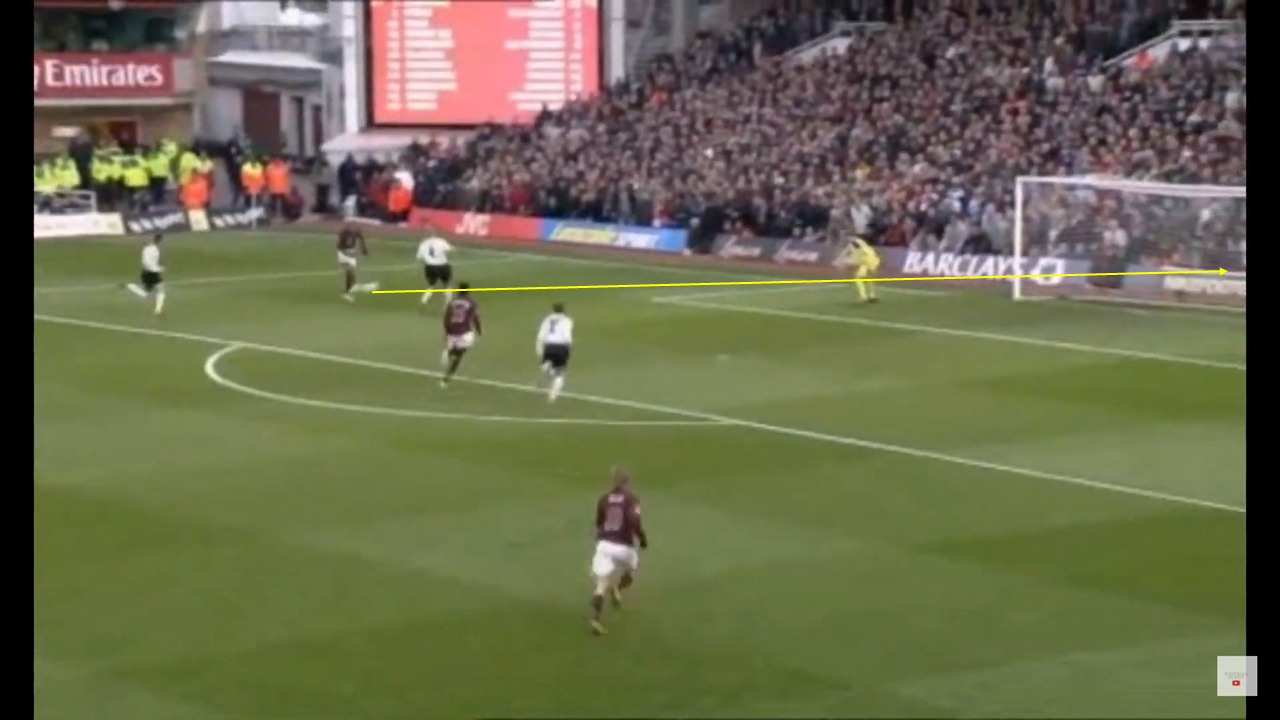
Here, Henry has broken through on goal.
He takes one touch to control the ball, one touch to set himself and another to bend the ball into the far bottom corner.
When analysing this goal, Henry highlights the touch he takes before the shot.
He takes a gentle touch that allows him to open up his body and bend the ball in with his right foot.
Without doing this, it would be impossible to have aimed for the far post.
Yet, with being so well known for this type of goal, how did Henry constantly outwit goalkeepers and put the ball into the same area?
The first step was freezing the goalkeeper.
When the goalkeeper comes out and looks to close the striker’s angle, Henry describes how he would freeze the goalkeeper, taking away their momentum and preventing them from closing off the goal completely.
Henry says, “I used to control and look at the goalkeeper to make him stop”.
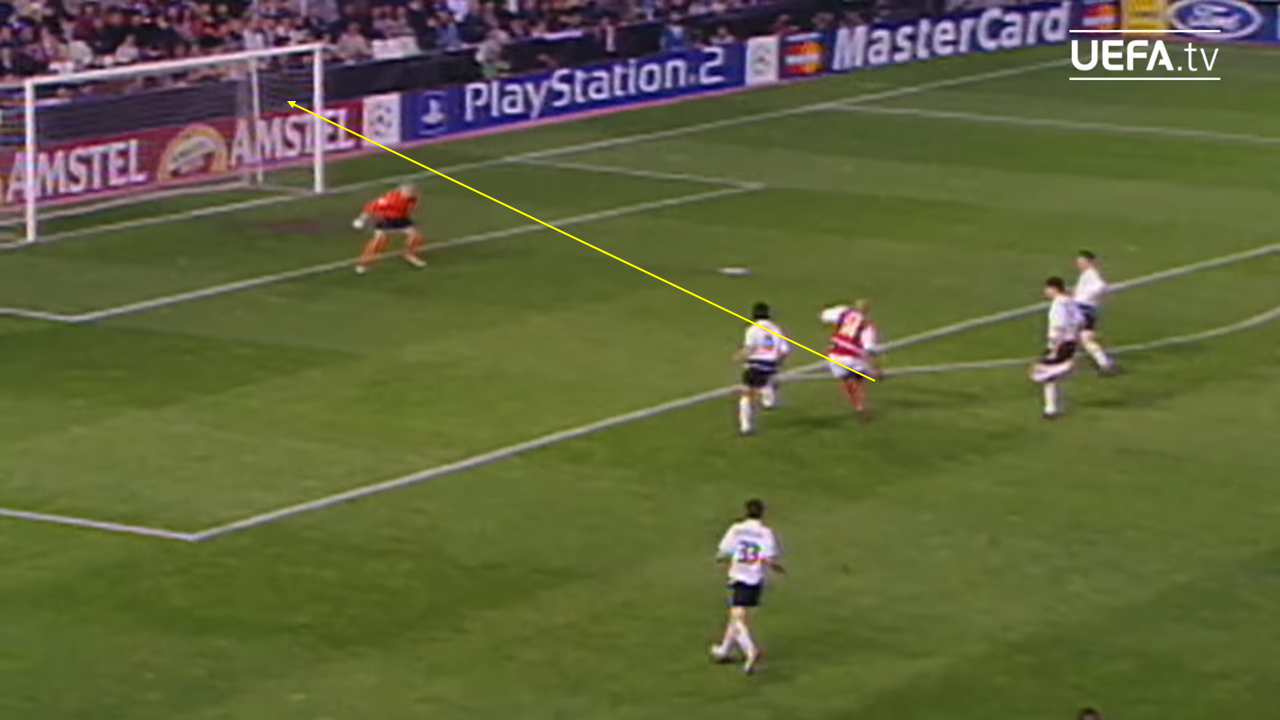
In this situation, Henry bears down on the goal, taking a moment to look up and see where the goalkeeper is.
Seeing that the goalkeeper has stopped his run, he knows he can easily bend the ball past him into the bottom corner.
Henry also stresses the importance of executing the technique when beating a goalkeeper who has predicted how you are going to finish.
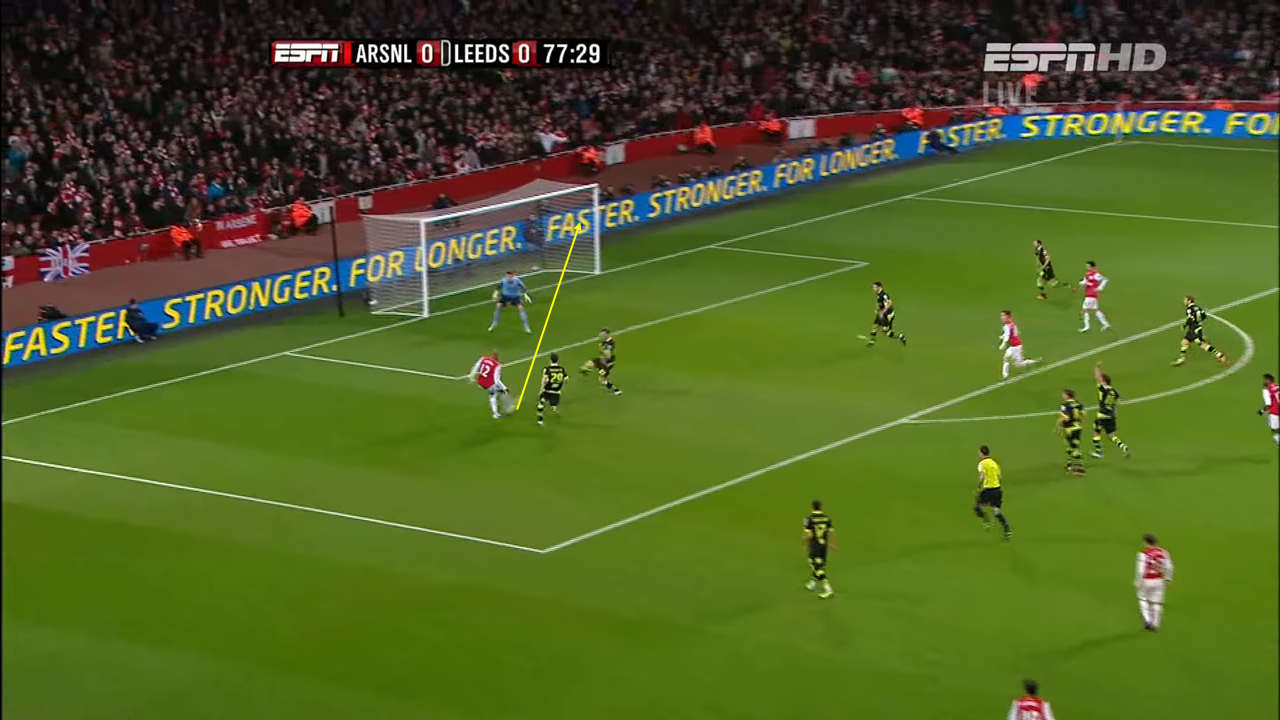
In this situation, Henry scores one of his most memorable goals against Leeds during his first match in his second spell for Arsenal.
He executes the finish that Arsenal fans had dreamt of seeing again on Henry’s return, bending the ball into the far corner.
Henry describes how even if the ‘keeper knows that he’s going to finish in the far corner if you curl the ball enough that it comes inside the post at the last moment, then it’s tough for the goalkeeper to stop.
Henry shares how the Leeds United ‘keeper told him after the game that he knew exactly what Henry was going to do, but he couldn’t stop it.
Henry was a master at outwitting a goalkeeper in zone two, but how can a player beat a ‘keeper who’s closed the angle for the striker to score in both zones one and two?
The Chip – Raúl
There’s maybe no more pleasing sight in football than when a striker runs through on goal and lifts the ball over the goalkeeper into the empty net.
Many strikers have scored some incredible chips, yet former Real Madrid captain Raúl has a catalogue of remarkable chip goals amongst the 323 goals he scored for Los Blancos.
The chip is a finish that can be used in zones one and two, but it heavily relies on where the ‘keeper is positioned.
The ‘keeper’s position from the goal line and proximity to the striker determine the correct method of chipping the ball.
The first and probably most essential is when the goalkeeper charges out to get to the ball and dives at the feet of the forward.
Ian Wright, who scored some remarkable chip finishes, cites a conversation he had with Arsenal’s former goalkeeper and coach, Bob Wilson.
Wilson told Wright that when a goalkeeper rushes out to meet a striker, he has to go down at some point.
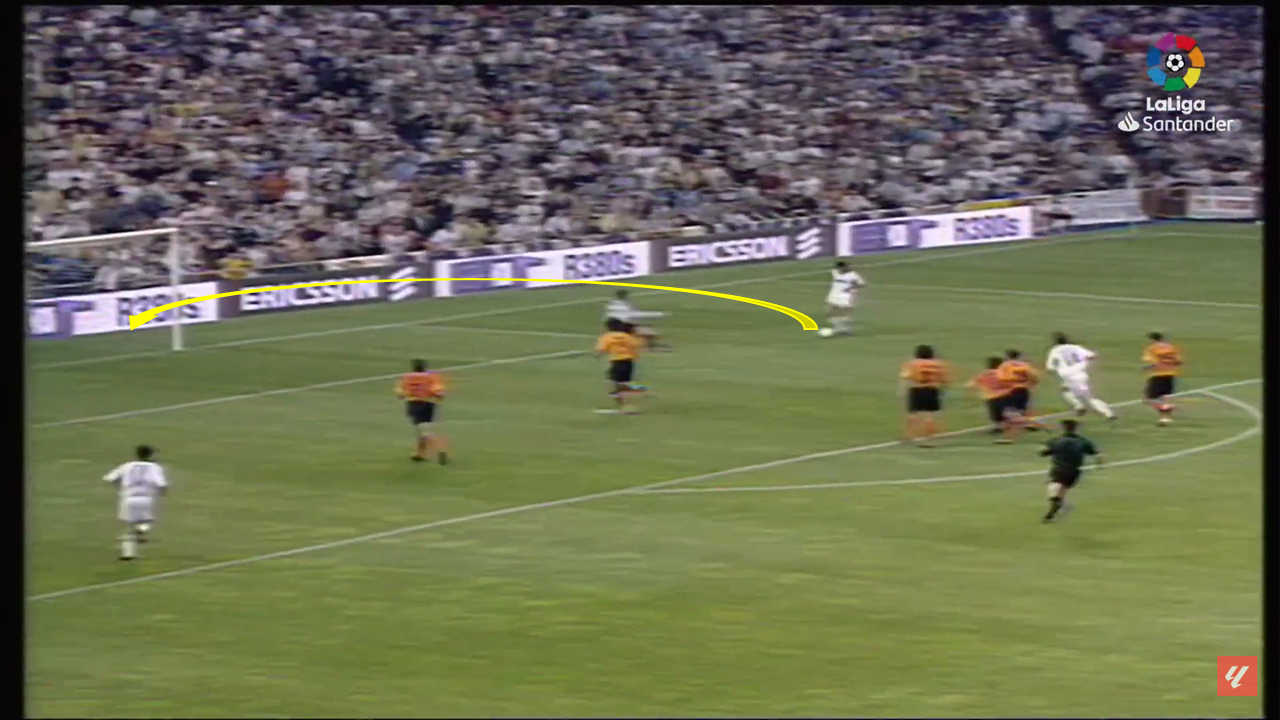
We see a clear example of Raúl executing this flawlessly in this situation.
He’s been played through on goal, and as the goalkeeper faces him, he stabs delicately underneath the ball, lifting it over the ‘keeper.
However, Raúl demonstrated other instances in his career when the chip was the perfect option.
Regardless of where the striker is positioned, the ‘keeper needs to stand on the edge of the six-yard box for a chip to be the best method of beating him.
Yet the closer the striker is to the goalkeeper, the more his technique needs to change.
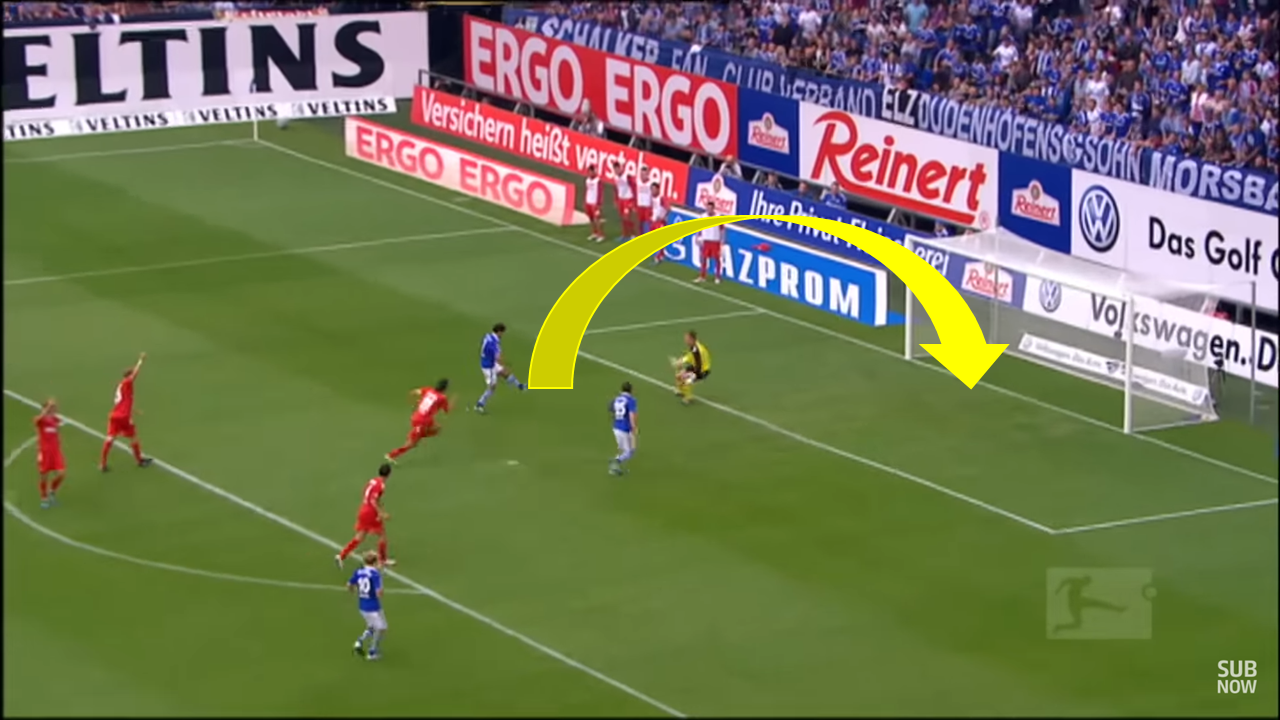
As seen here, Raúl is 1v1 with the ‘keeper, who’s standing on the edge of his six-yard box.
To stab underneath the ball and get the required trajectory would be pretty much impossible.
However, Raul scoops the ball over the goalkeeper, which causes it to end up in the back of the net.
Raúl also had the ability to score chips from a longer distance.
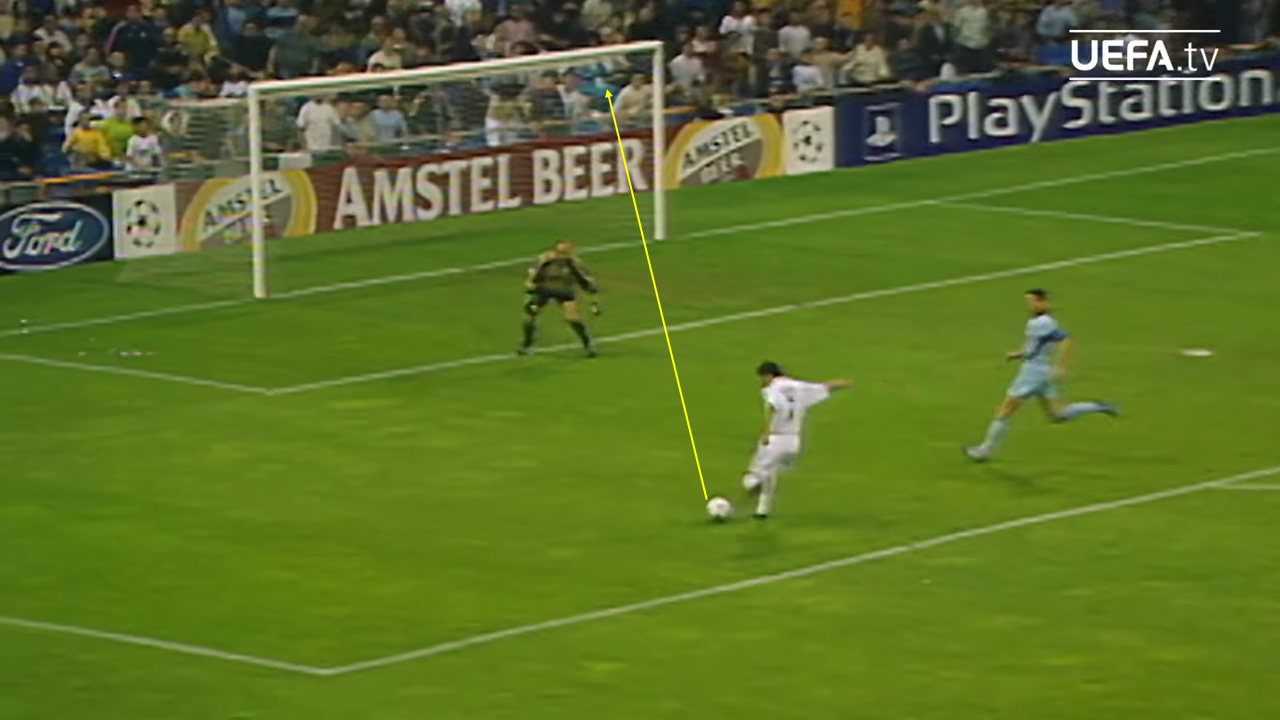
Here, he’s in zone two.
The goalkeeper has come to the edge of the six-yard box.
Where Raul is positioned, scooping the ball would cause it to travel too slowly, allowing the ‘keeper to recover.
However, Raul stabs underneath the ball, giving it the correct speed and trajectory to end up in the back of the net.
Going Around The ‘Keeper – Ronaldo Nazario
One of football’s craziest statistics is that Ronaldo Nazario scored 88 goals by taking the ball around the goalkeeper.
This blows your mind even more when you consider that this equated to 25% of his career goals.
Ronaldo’s speed and flair made it the perfect finish for the Brazilian forward when he was faced with goalkeepers.
However, like both Raúl and Henry, how could he consistently finish in the same manner when goalkeepers know his intentions?
His first method of going around the ‘keeper is when a race occurs between the striker and the goalkeeper.
As a through ball is played, it may appear to the goalkeeper that they can get to the ball before the striker can latch onto it.
However, if the striker gets there first, he’s in big trouble.
Ronaldo found himself in this situation often.
His electrifying pace often got him in behind defences, allowing him to go one-on-one with the goalkeeper.
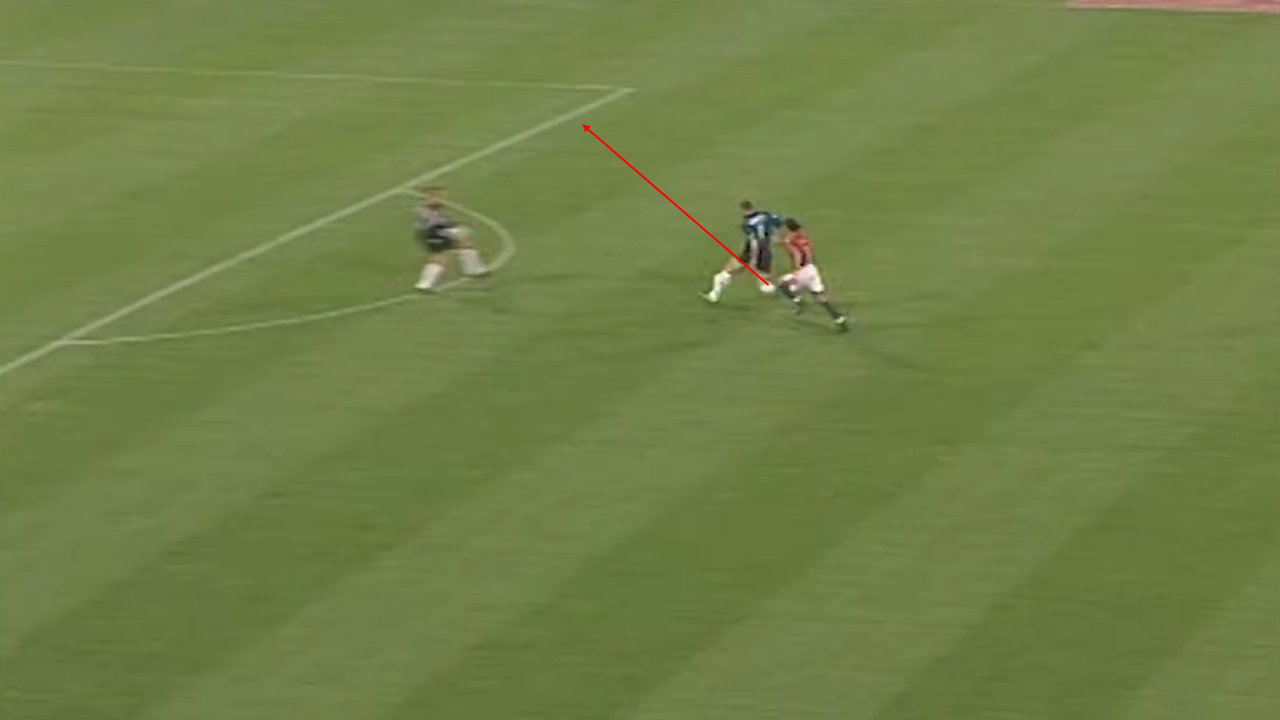
In this situation, Ronaldo pips the goalkeeper to the ball and knocks it past the rushing ‘keeper with his first touch, leaving him with acres of space to tap the ball into the empty net.
This, again, is an essential finish that is forced upon the striker when the ‘keeper is rushing out.
However, there are other times when a striker can decide his best option is to round the goalkeeper.
As the previous two finishes have both shown, the ‘keeper’s positioning is an essential factor.
The ‘keeper must be several yards outside the six-yard box to have enough room for the striker to go around him and finish.
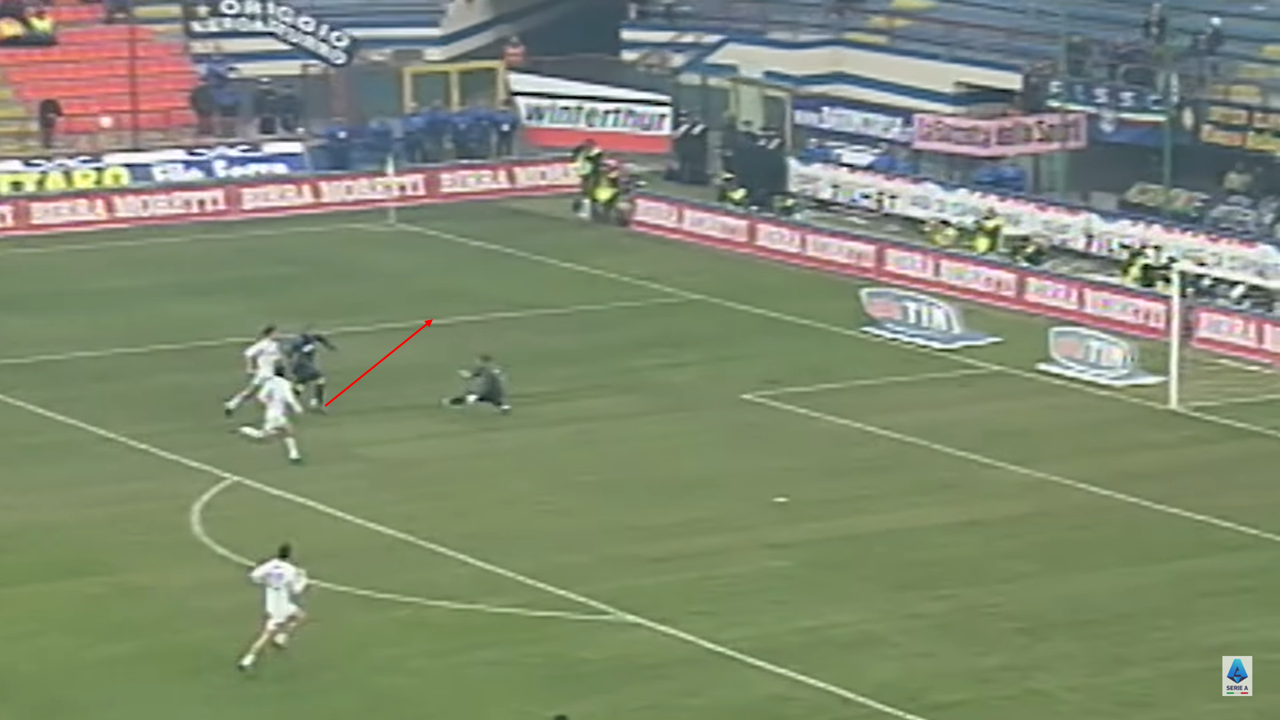
In this situation, Ronaldo is running through on goal.
This angle at which he’s approaching the goal is very similar to Henry’s trademark finish.
Ronaldo uses this to his advantage.
He opens up his body, mimicking as if he’s going to place the ball into the far corner.
This makes the ‘keeper dive, allowing Ronaldo to dribble by him and slot the ball into the empty net.
Conclusion
Thierry Henry’s reflection on his development as a goalscorer supports the quote, ‘repetition leads to the elimination of doubt’.
Henry described how he trained his trademark finish until he didn’t have to think when he got in front of goal.
Each technique in this analysis can be practised repeatedly by attackers to help them become more confident in front of the goal and replicate some of the game’s legends.

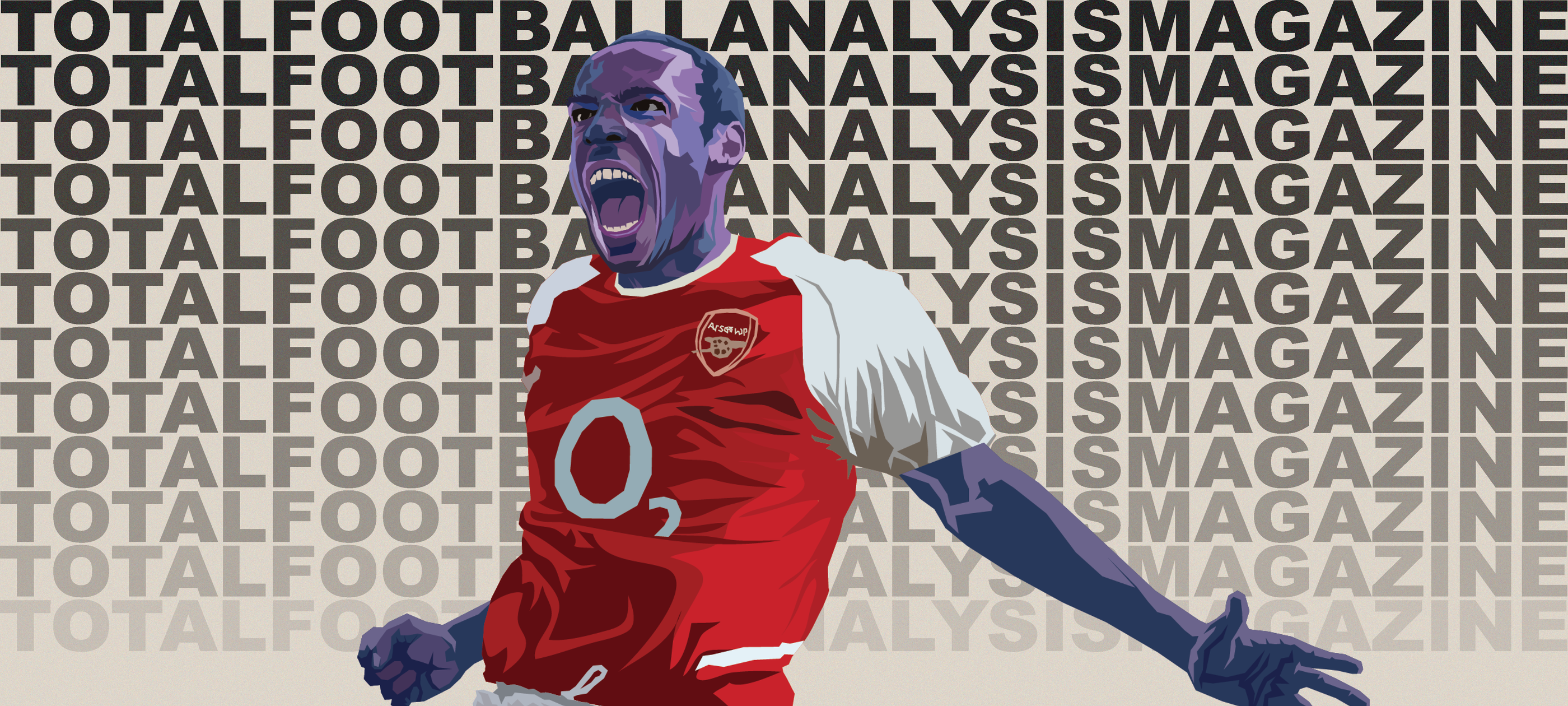



Comments